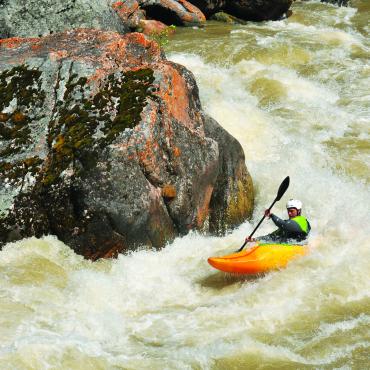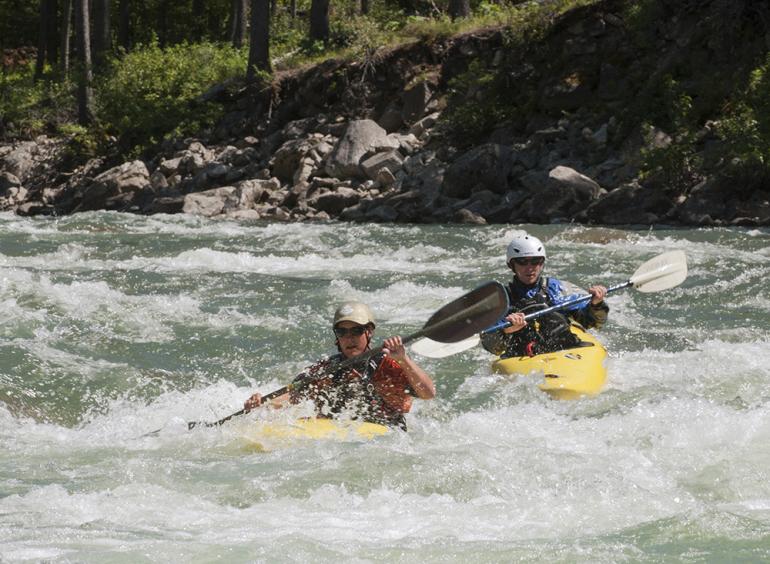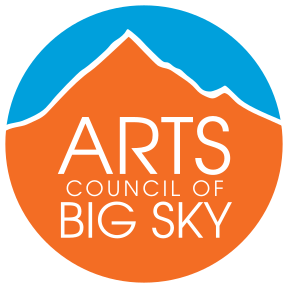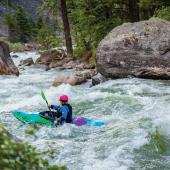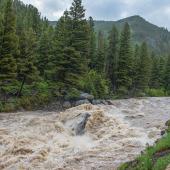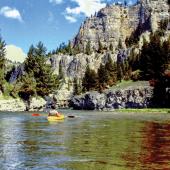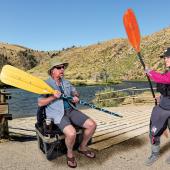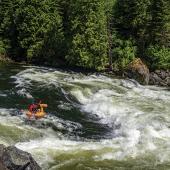Zero to Hero
Whitewater kayaking progression.
Being able to competently navigate whitewater offers access to some of the most beautiful country in the world, while at the same time fulfilling our ancestral need for adrenaline. From multi-day trips through the wilderness to bobbing and weaving through hydraulics on roadside runs with your friends, Montana has sections of river that will satisfy any kayaker’s needs. But with a steep learning curve and the potential for serious consequences, it can be an extremely difficult sport to break into. Where do you start?
Flatwater Dreaming
First things first: find a boat and a paddle, and take them on some non-moving flat water. The East Gallatin pond, Bozeman Swim Center from 3:15 to 5:00pm on Sundays until June 2, and Hyalite Reservoir—these are places you should know well before you even think about the river. Here, you can paddle around and get a feel for the boat in a mostly safe environment, learn the basics of paddling, and decide whether or not taking it to whitewater is right for you.
Knowledge Is Key
Even better, take a course with the American Canoeing Association (ACA) or another qualified instructor. These guys will cover how to drive a boat, the wet-exit (how to get out once you’ve flipped over), and the basics of rolling. They will also cover the fundamental safety skills everyone should know before entering a river, and may have boats to use or advice on gear options.
Friends & Enemies
Find a group of like-minded people. Whether you meet them through a course or run into them at the lake, a group of friends who are trying to accomplish a similar paddling goal is huge. Help each other make good decisions and gain experience while slowly stepping it up from the pool or lake to Class II moving water. Avoid people who encourage you paddle above your skill level. Take your time and feel confident with the basics before you step it up. Never go alone.
The Roll
If you’re going to work up to Class III whitewater—think the Gallatin in mid-summer—you’re going to want to know how to roll. Kayaking becomes exponentially more fun as soon as you don’t have to swim every time you flip over, but the roll can be a real chore to learn. First try it in a warm environment like the pool. Find good instructors, watch YouTube videos, be persistent, and eventually you’ll get it.
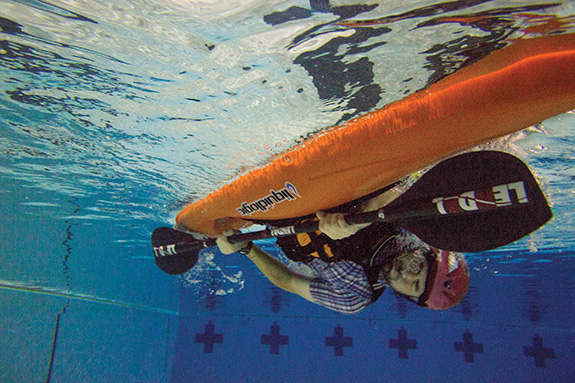
The Combat Roll
Taking the roll to moving whitewater is a whole different story. Think about getting knocked upside down by a wave, feeling the rocks and water rushing by your head, and setting up to roll back up. With solid technique, you can right yourself and keep paddling like nothing happened. This takes time. You should feel confident with your flatwater roll first, then accomplish lots of rolls in safer Class II environments. Only then should you step it up into a more difficult realm. Remember, this stage is where people tend to push it too much, have a scary swim or negative experience, and swear off kayaking altogether. Take it slow and you will be rewarded.
Quit Your Job
If you’ve made it this far, you’re probably hooked on kayaking and think about your next river trip constantly. Now is when you build yourself a modest home in the back of your car, save enough money to quit your job, and drive to every river that’s running. Luckily the Gallatin and Madison both have quality whitewater close to home. Take advantage of the runs nearby and always make good decisions when it comes to your ability and the water level.


